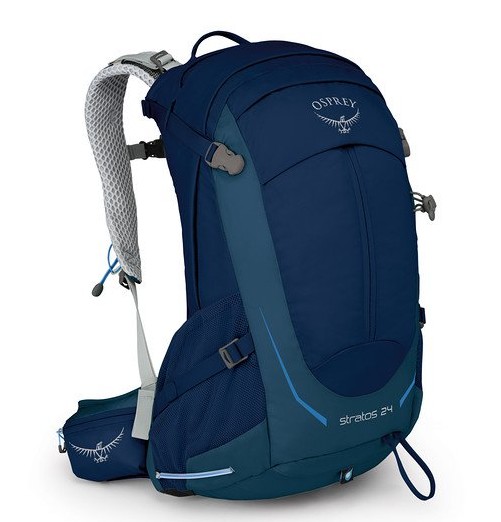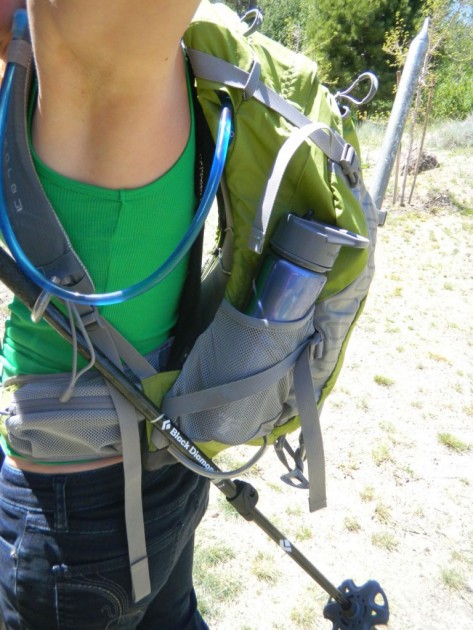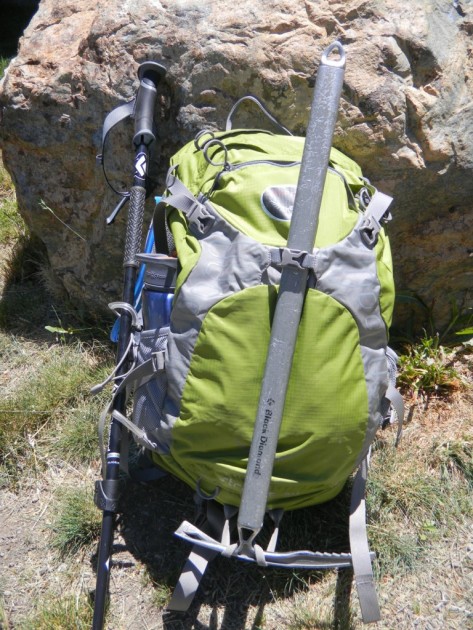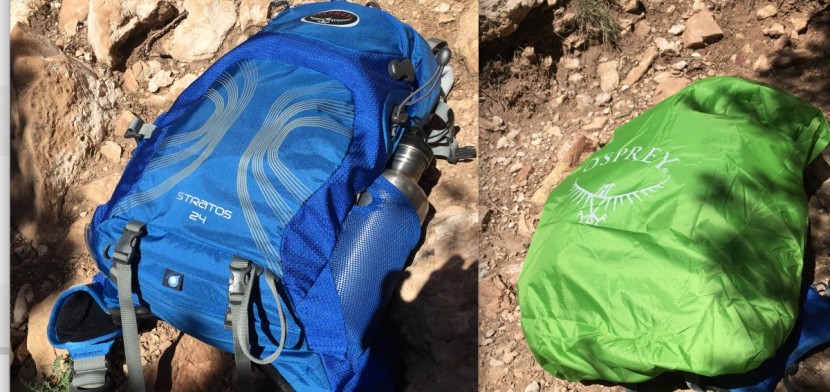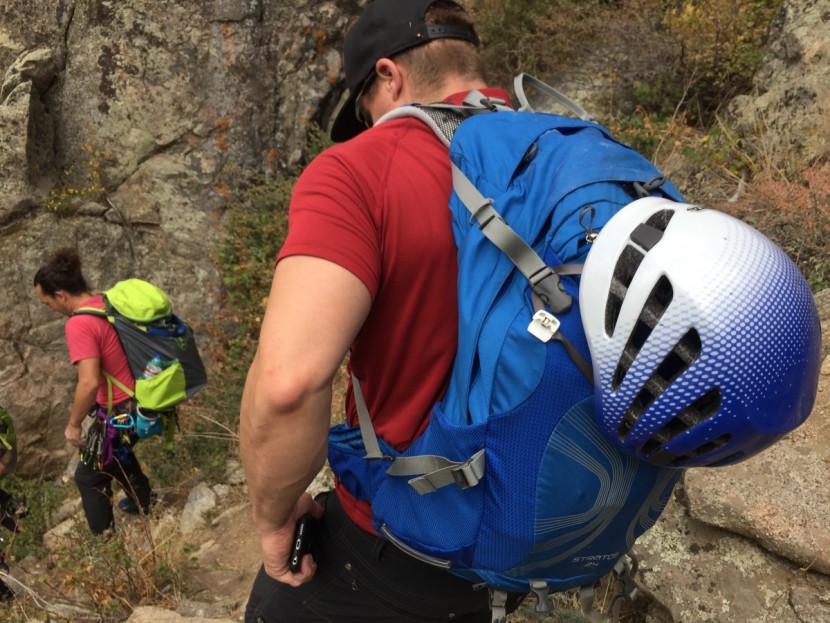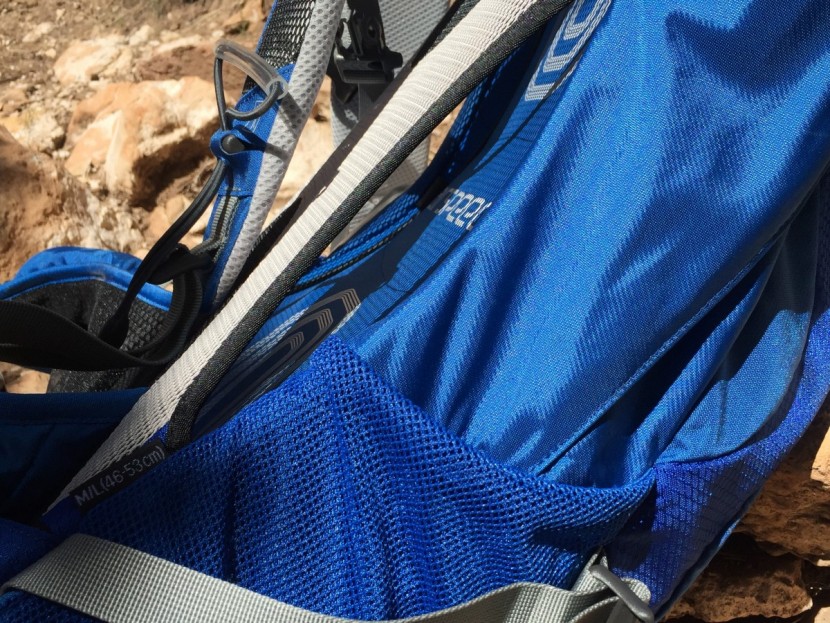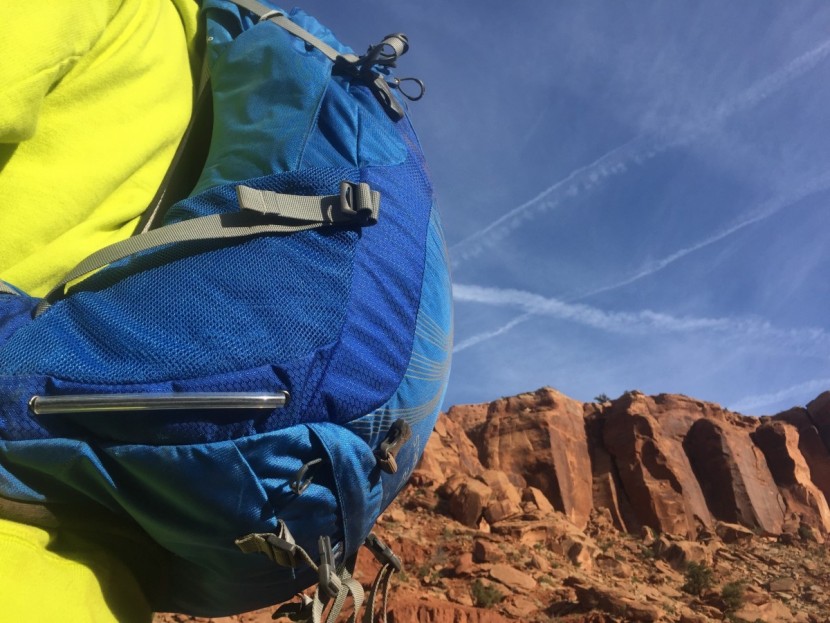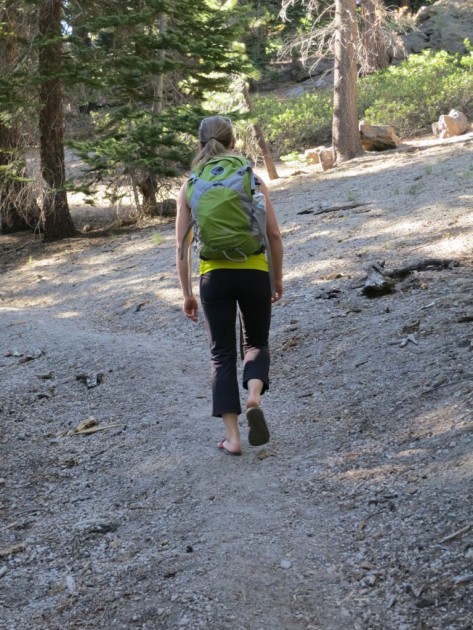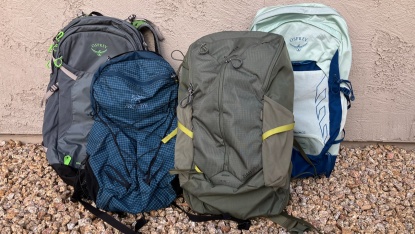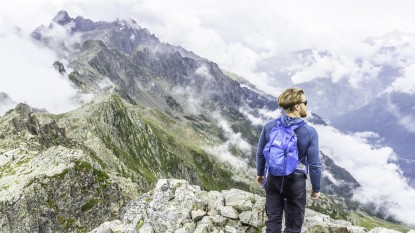Osprey Stratos 24 Review

Our Verdict
Our Analysis and Test Results
The New Osprey Stratos 24 vs. the 2016 Version
The new Stratos 24 features notable updates in design and technicalities which aim to improve fit, comfort, and the overall aesthetic of the product. See a side-by-side photo comparison of the new Stratos 24 on the left, and the previous Stratos on the right, followed by a run-down of the changes made.
- Adjustable Torso Lengths — The back panel is adjustable to accommodate variations in torso length in the new Stratos.
- Seamless Hipbelt Interface — Osprey updated the hipbelt to a seamless interface, which they claim increases comfort.
- Vertical Front Storage Pocket — A zipper runs down the front of the pack for access to a new front pocket.
- Weight Increase — The new Stratos weighs 2 lbs 12 oz according to Osprey, which is four ounces more than its predecessor.
- New Colors and Graphic Design — The new colors are Eclipse Blue (pictured), Black, Gator Green, and Beet Red.
As have yet to get our hands on the updated version, the following assessment and analysis apply to the previous version of this backpack. We expect performance in most areas to remain similar between the two models, with a few new conveniences in the latest Stratos.
Hands-On Review of the 2016 Stratos 24
The Osprey Stratos features a back panel that strives for the ultimate ventilation but results in a pack that carries awkwardly.
Features
The back panel on the Osprey Stratos, with a curved panel to hold the main compartment of the pack off of your back, is one of the most innovative and breathable we have seen. Few other packs, if any, let this much air circulate. This design also means that sharp objects in the pack won't poke into your back. However, because of its curve, if you load the pack with a lot of weight, it feels like it is tipping you backward and the weight does not distribute properly. This design also means this pack is relatively bulky for its volume (since there is a lot of dead space behind your back).
There is a clever hiking pole stash system that lets you quickly stash your poles without removing the pack if you get to a tricky section of trail where you need to use your hands.
The side compression straps can be routed under or over the side mesh pocket. This cool feature lets you compress the pack and still have access to the side panel for a water bottle or other item.
This pack comes with a rain cover that stashes away into its own pocket. This pocket is ventilated at the bottom, which means you can put a wet rain cover or a wet base layer in there to start drying. In turn, it can dry without getting the rest of your pack contents wet, though there is no large outer pocket to stash spare things like extra layers or rain shell. Instead, this area is used up by the rain cover pocket.
Weight
At 2 lbs 8 oz, this is the heaviest pack in this review. The back panel is the primary feature that adds weight, and it also adds bulk and size to a small capacity pack. This is not the pack for people trying to move fast and light in the mountains. In past iterations of our daypack review, the Stratos wasn't the heaviest. This year it is. The Granite Gear Virga is slightly lighter, while the REI Co-Op Flash 18 and Osprey Daylite are significantly lighter.
Comfort
The ventilated Airspeed back panel and meshy waist belt make this pack a breeze to wear while hiking in hot weather. This is by far the most breathable pack, so if you are worried about sweating, the Osprey Stratos is the way to go. When used in warm and humid climates, the increased ventilation is a dream. The main thing to consider is that it carries weight uncomfortably far back when the pack is loaded too heavily. The Gregory Salvo 24 has a similar stretched mesh back panel that hardly takes up internal volume and is more comfortable. We ranked the Stratos equal with the Osprey Talon 22 because our reviewers enjoyed having dry, sweat-free backs. Testers also recognized that the weight distribution issue prevented us from carrying heavier loads as comfortably as packs without internally bulging back panels. The Stratos earned an 8/10 for comfort.
Versatility
Since the carrying capacity is cut down inside the pack by the back panel, and weight is carried differently, this pack has more limited use than some of the other packs we reviewed. It doesn't carry high loads very well, so it is best used strictly for day hiking, where the items you are carrying are relatively minimal in weight. It is not suited for activities like climbing, where you have to lug around lots of metal. It is also difficult to use this pack for travel because there are less organizational pockets than in some of the other packs. Also, with the addition of the ice tool carry and trekking pole stash features, it is more tailored to a hike in the mountains than carrying around town.
Durability
This pack has so far been quite durable, and the back panel, which at first glance looks fragile, is actually really sturdy and well built. Still, care should be taken to keep the stretched mesh back from sharp objects. Consider the Deuter Speed Lite 20 if durability is paramount but you still like having a lot of features.
Ease of Use
The curve of the back panel makes it difficult to pack and store stuff efficiently. All of the items in our “10 essentials” pack test fit, with the addition of an ice tool carry and trekking pole stash. However, if you carry much more than the items on our list, the pack becomes hard to pack and too heavy and begins to pull you backward.
The rest of the features, such as the trekking pole carry, can be used without removing the pack, and are very simple and straightforward to use. Even the convenient rain cover and dual hydration hose ports make it so this pack can be used to your maximum comfort and in all types of weather. The ergo pull adjustment of the waist belt is also much easier to use than most waist belts.
Best Application
This pack is best for simple day hikes where you don't need to carry much stuff besides food, water, extra layers, and possibly an ice tool and trekking poles. The pack will not comfortably hold much more, and it lacks good organizational pockets for work or school use. Use it for treks in warm climates, where the extreme ventilation will overcome the downsides of the curved back panel.
Value
This pack is on the expensive side. Buy it if overheating is a primary concern when looking for a daypack.


